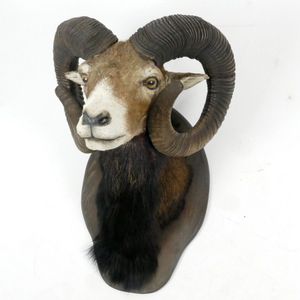Gold Elephant Head Gem Brooch/Pendant
You must be a subscriber, and be logged in to view price and dealer details.
Subscribe Now to view actual auction price for this item
When you subscribe, you have the option of setting the currency in which to display prices to $Au, $US, $NZ or Stg.
- Carat - A carat (abbreviated "ct") is a unit of measurement used to describe the weight of a diamond or other gemstone, and separately is a unit of measurement used to describe the weight of precious metals such as gold,.
For gemstones, one carat is equal to 0.2 grams or 200 milligrams. The weight of a diamond is one of the Four Cs (along with cut, colour, and clarity) that are used to determine a diamond's value.
It is important to note that a diamond's weight does not necessarily correspond to its size. A diamond's cut, which affects how well it reflects light, can make a diamond of a lower weight appear larger than a diamond of a higher weight. Additionally, the carat is not the only factor to determine the value of a diamond, other factors such as clarity, colour and cut are important too.
In the gold industry, the purity of gold is measured in carats (abbreviated "ct"), with 24 karats being pure gold and lower carat numbers indicating a lower purity level. So, for example, 18 carat gold is 18/24 or 75% pure gold, and 12 carat gold is 12/24 or 50% pure gold. - Emeralds - Emeralds have been used in jewellery making for thousands of years, and are prized for their deep green colour, which is caused by the presence of chromium and vanadium in the mineral beryl. Because of their rare colour, emeralds are often more valuable than diamonds of a similar size and quality. In jewellery making, emeralds are typically cut into round or oval shapes to maximize their color and clarity. They are often set in gold or platinum and used as the centrepiece of a piece of jewellery, such as a ring or necklace. They can also be used in combination with other gems, such as diamonds, to create intricate and beautiful designs.
- Cabochon Cut in Jewellery - A cabochon cut is a type of gemstone cutting where the stone is cut and polished in a convex shape with a flat bottom and a domed top, with no facets. This type of cut is typically used for opaque or translucent stones that have natural patterns or inclusions that are best displayed in this type of cut. Examples of stones that are often cut as cabochons include turquoise, opal, and moonstone.
- Ivory - Ivory is a hard white material that comes from the tusks of elephants, mammoth, walrus and boar, or from the teeth of hippopotamus and whales. The ivory from the African elephant is the most prized source of ivory. Although the mammoth is extinct, tusks are still being unearthed in Russia and offered for sale.
Ivory has been used since the earliest times as a material for sculpture of small items, both in Europe and the east, principally China and Japan.
In Asia ivory has been carved for netsuke, seals, okimono, card cases, fan supports, animals and other figures and even as carved tusks.
In the last 200 years in Europe ivory has been used to carve figures, for elaborate tankards, snuff boxes, cane handles, embroidery and sewing accessories, in jewellery and as inlay on furniture. Its more practical uses include being used for billiard balls, buttons, and a veneers on the top of piano keys.
The use and trade of elephant ivory have become controversial because they have contributed to Due to the decline in elephant populations because of the trade in ivory, the Asian elephant was placed on Appendix One of the Convention on International Trade in Endangered Species (CITES), in 1975, and in January 1990, the African elephant was similarly listed. Under Appendix One, international trade in Asian or African elephant ivory between member countries is forbidden. Unlike trade in elephant tusks, trade in mammoth tusks is legal.
Since the invention of plastics, there have been many attempts to create an artificial ivory
This item has been included into following indexes:
Visually similar items

A small Guy Boyd bronze figure of a girl, on oval base, inscribed 'Guy Boyd'. Height 17 cm.

An Arapawa sheep ram, tightly knotted dark brown wool, black head and spiralling horns.

Black forest novelty monkey nutcraker

A good taxidermy shoulder mount Mouflon, a sub-species group of wild sheep, dark red/brown coat with long hair to the throat and chest area, this mature ram with ridged horns curved almost in one full revolution, glass eyes, shaped oak wall mounting backin
